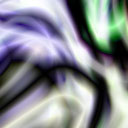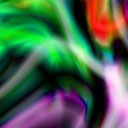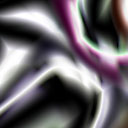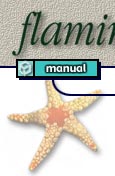


Hue and Cry
Hue and Cry is a color noise generator. It creates areas of semi-random abstract color which are useful for making backgrounds or for reducing the uniformity of an illustration. You can also use the output of Hue and Cry as a picture base or as an element for textures and tiles for surfacing 3D models.
Illustrated installation instructions are online.
To use this software, you need a paint program which accepts standard Photoshop 3.02 plugins.
Just put the plug-in filter into the folder where your paint program expects to find it. If you have Photoshop, the folder is Photoshop:Plugins:Filters or Photoshop:Plug-Ins. You must restart Photoshop before it will notice the new plug-in. It will appear in the menus as Filters->Flaming Pear->Hue and Cry.
Most other paint programs follow a similar scheme.
If you have Paint Shop Pro: you have to create a new folder, put the plug-in filter into it, and then tell PSP to look there.
PSP 7:
Choose the menu File-> Preferences-> File Locations... and choose the Plug-in Filters tab. Use one of the "Browse" buttons to choose the folder that contains the plug-in.
The plugin is now installed. To use it, open any image and select an area. From the menus, choose Effects->Plug-in Filters->Flaming Pear->Hue and Cry.
PSP 8, 9, and X:
Choose the menu File-> Preferences-> File Locations... In the dialog box that appears, choose Plug-ins from the list. Click "Add." If you are using PSP 8 or 9, click "Browse". Now choose the folder that contains the plug-in.
The plugin is now installed. To use it, open any image and select an area. From the menus, choose Effects->Plugins->Flaming Pear->Hue and Cry.
When you invoke Hue and Cry, a dialog box will appear:
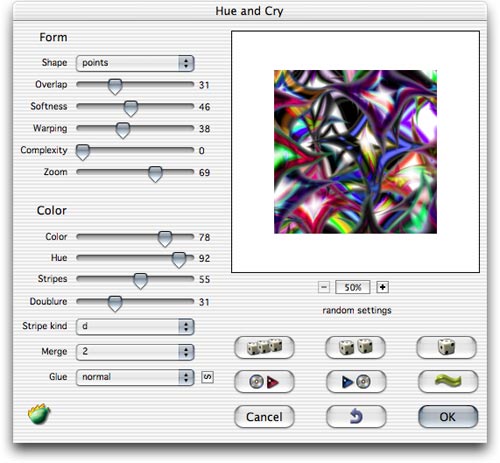
| Quick start |
|||
| If you just want to make some color quickly, click the dice buttons
until you see an effect you like; then click OK.
Using the dice is the easiest way to use Hue and Cry. If you want to hand-tune your own effects, it helps to learn the controls, which are arranged into two groups: ...and a few other controls that affect the whole image. |
| Overlap makes the blotches larger and smaller. Large blotches wll overlap
each other, producing interesting color effects.
|
 smaller and larger overlap
|
| Softness controls how crisp or soft the blotches' edges are.
|
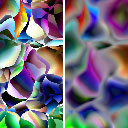 harder and softer
|
| Warping deforms the result, disguising the shapes.
|
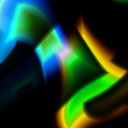 warped diamonds
|
| Complexity lets you draw extra shapes, creating a more complicated result.
Zoom makes the entire pattern larger or smaller. |
 simple and complex diamonds |
| Stripes produces concentric rings of color in the blotches.
Doublure creates an indescribable variation. Stripe Kind lets you choose from four different styles of stripes. Merge lets you choose from four different ways of overlapping the blotches. |
 different stripes and doublure
|
| Hints Because Hue and Cry has so many controls, the easiest way to use it is to click the dice buttons until you see what you like, and the fine-tune the result a little. |
You can place an order online here. A secure server for transactions is available.
Answers to common technical questions appear on the support page, and free upgrades appear periodically on the download page.
Trouble with your order? Orders are handled by Kagi; please contact them at admin@kagi.com .
For bug reports and technical questions about the software, please write to support@flamingpear.com .

